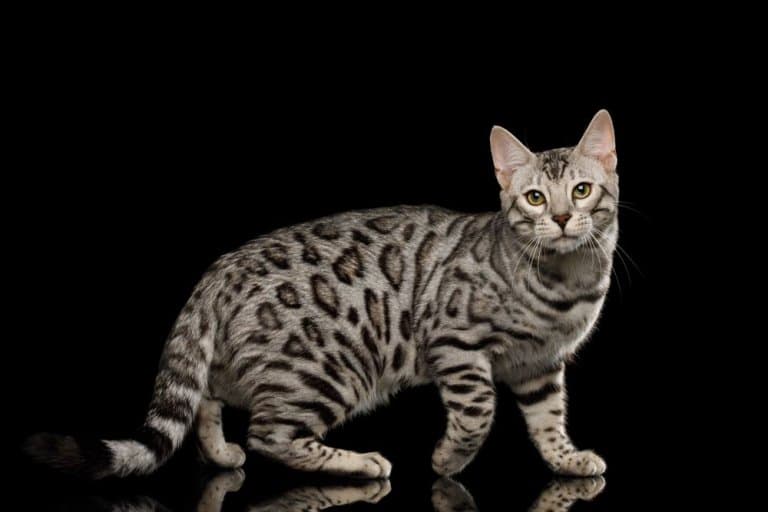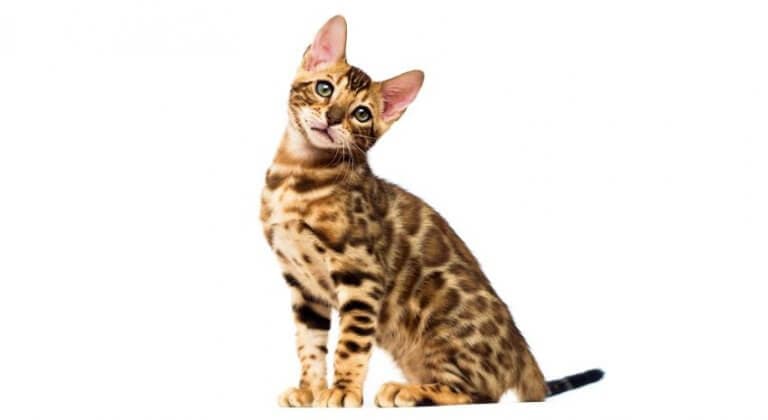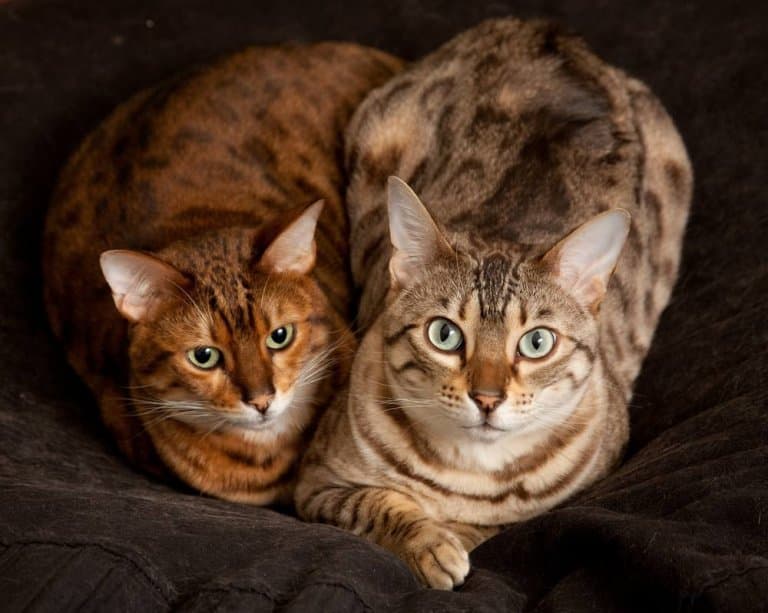
bengal-cat
Energetic, curious, affectionate, intelligent
Overview
Origin
United States
Life Span
12-20 years
Height
13"-16"
Weight
6-15 pounds
Group
Large shorthair
Price
$1,500 - $3,000
History

Cat fanciers began experimenting with Asian Leopard cat hybridization more than 200 years ago, but the Bengal cat we know and love today didn’t emerge until the 1960s, when Dr. Willard Centerwall of Loma Linda University began hybridizing Asian Leopard cats to see whether they would pass their immunity to feline leukemia on to hybrid offspring. While immunity wasn’t passed on, something great did result from those early experiments: the beginnings of a future new cat breed.
It took decades for Bengal cats to become standardized. In 1980, Dr. Centerwall sent some of his Bengal cats to Jean Mill, who wanted to decrease the desire for fur as a fashion statement by popularizing domestic cats with exotic looks. At the same time, she hoped to reduce the demand for illegal trafficking in wild cats for the pet industry.
The breed was further developed with the addition of Tory of Delhi, a domestic street cat that was imported from India. Other breeders discovered that Egyptian Mau cats were excellent candidates for pairing with Asian Leopard cats, with the cross resulting in beautiful spotted Bengals.
The International Cat Association (TICA) recognized Bengal cats as an experimental breed in 1983, and full recognition was gained in 1993. The Cat Fanciers' Association (CFA) granted the Bengal breed its official recognition in 2016.
Care

Nutrition
Just like their wild cousins, Bengal cats need a diet that focuses on meat, particularly if they are members of the first three generations. Most commercial kibble is not really suitable for Bengals, as it is too high in carbohydrates. High-quality canned, fresh or raw food is a good choice as it generally has a higher meat content.
Grooming
While Bengal cats are perfectly capable of grooming themselves, they appreciate attention and will enjoy brushing on a regular basis. Teach your cat to accept nail trimming from a young age, and brush their teeth daily.
Exercise
Bengal cats need lots of exercise—far more than the average cat. Although most cats spend most of their time asleep, these frisky felines require numerous play sessions every day, particularly during their first few years of life.
Health
Like many cat breeds, Bengals do have the potential to develop some known health issues. Eye problems such as cataracts and progressive retinal atrophy (PRA) are concerns and might develop as a Bengal cat ages. The hereditary form of PRA is not limited to older cats, though. It sometimes occurs in kittens with symptoms beginning at an age as young as 12 weeks. PRA causes blindness and there is no known cure.
Breed Standard

Body
Bengal cats are medium to large in size, with sleek, muscular bodies. The hindquarters are slightly higher than the shoulders.
Head
The head is broad, with a modified wedge shape. Rounded contours and high cheekbones are preferable. The head is somewhat small in proportion to the cat's body. Mature males may display jowls.
Eyes
The eyes have a round to oval shape. They are large and set wide apart. Lynx-point Bengal cats must have blue eyes; cats of other coat colors may have eyes of any color.
Ears
A Bengal cat's ears are medium to small size with wide bases and rounded tips. They are set far apart, and follow the contours of the face when viewed from the front. When viewed in profile, the ears display a slight forward tilt. While tufting is undesirable, light, horizontal furnishings are acceptable.
Color
Bengal cats come in a variety of colors and patterns. Rosettes and spots may be displayed on the rosetted/tabby pattern. The marble pattern does not resemble classic tabby, meaning there is no circular pattern or bull's-eye. Rosettes and spots can be present on the marble tabby. The Bengal cat may be brown tabby, black silver tabby, blue tabby, blue lynx point, blue silver tabby, charcoal tabby, and all other tabby colors. Smoke pattern colors and melanistic pattern colors are desirable. Nose leather and paw pad color corresponds to coat color.
Coat
The Bengal cat has a short, soft, silky coat that lies close to the body. Glittering at the tips of the hair is desirable. Bengals may also have long hair. Long-haired Bengals are shown separately from short-haired Bengals.
Tail
The Bengal cat has a medium-length tail that is proportionate to the body. The tail is thick with a tapered end and a rounded tip.
Legs & Paws
The legs are of medium long length with substantial musculature. Rear legs are slightly longer than front legs. The paws are large and ground, and the knuckles appear prominent.
Personality & Temperament

With exotic looks to match its name, the Bengal cat originated as a cross between the Asian leopard cat and a domesticated cat. A number of breeds were used in the Bengal cat's development, including the Egyptian Mau, Ocicat, Abyssinian, Burmese, American Shorthair, and domestic shorthair cats. These days, members of the Bengal cat breed are the product of a cross between two purebred Bengal cats.
Playful and active, Bengal cats are excellent pets. Quite a bit less standoffish then some other wildcat hybrids, these incredible cats enjoy affection and develop close bonds with their family members. Although they might be up for a cuddle now and then, Bengal cats are anything but couch potatoes. This highly active breed needs a lot of daily activity and play to thrive.
Bengal cats love to climb and like their wild, jungle-dwelling cousins, they seek high vantage points from which to view their domain. Curious, they like to be in the middle of everything and they enjoy learning how things work.
Bengal cats are notorious for opening doors, activating light switches, flushing toilets, emptying cupboards, and more. They are eager to learn tricks, and thanks to their high level of intelligence, they’re very easy to train. Try teaching your Bengal cat "sit" and "shake paw," and games like fetch.